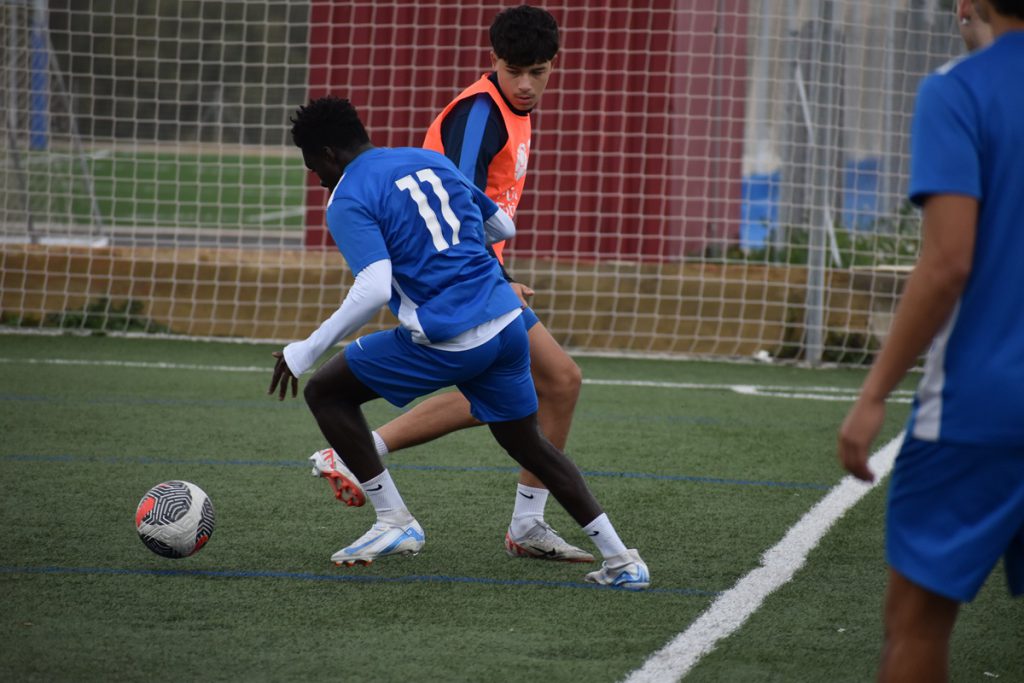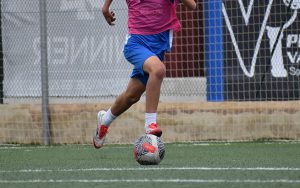Soccer tryouts in Europe are a dream opportunity for aspiring players hoping to take their game to the next level. Whether you’re aiming for a spot in an academy, a pro trial, or just want to test your skills on European soil, knowing what’s ahead can make or break your performance.
But let’s be honest. European trials are competitive. Coaches aren’t just looking for raw talent; they want mentally sharp, tactically aware, and physically prepared players. That’s why preparation isn’t just important, it’s essential.
If you’re planning to attend a tryout, whether it’s through a local camp, scouting event, or even a program in an elite international soccer academy in Europe, it’s crucial to understand how these trials are structured and how to stand out from day one.
Table of Contents
- Understand the Format Before You Arrive
- Bring More Than Just Your Skills
- Prepare Like a Pro: Physical Conditioning
- Technical Training: Sharpen Your Skills
- Mental Preparation: Stand Out Without Saying a Word
- Gear and Documents: Be 100% Ready
- After the Tryout: What Happens Next?
- Final Thoughts: Be More Than Just Another Player
Understand the Format Before You Arrive
Every tryout is different, but most European soccer trials follow a similar structure:
✅ Warm-up sessions to test agility and fitness.
✅ Technical drills focusing on ball control, passing, and footwork.
✅ Small-sided games to evaluate decision-making and positioning.
✅ 11v11 scrimmages to observe full-game performance.
✅ Coach evaluations based on effort, attitude, and skill.
Knowing this gives you a chance to mentally prepare, especially for parts you might not face regularly in local tryouts. Don’t be surprised if fitness is tested early, they want to see how much work you’ve put in before arriving.
Bring More Than Just Your Skills
You need to be technically solid, but that’s just the beginning. Coaches and scouts are looking for complete players, those who communicate well, follow instructions, and show leadership without being arrogant.
Here’s what else you should bring to the pitch (besides your cleats):
💬 Communication – Talk to teammates, stay vocal, and show awareness.
🧠 Game IQ – Make smart decisions quickly. Coaches notice players who can adapt.
🔥 Work ethic – Hustle on every play. First to press, last to give up.
💪 Body language – Confidence matters, but so does humility.
Prepare Like a Pro: Physical Conditioning
This isn’t the time to “wing it.” You need to show up in peak physical condition. That means:
- Endurance training: Long-distance runs, intervals, or HIIT workouts
- Speed drills: Sprint mechanics, acceleration, and agility
- Strength training: Core stability, leg strength, and injury prevention
- Recovery habits: Hydration, proper sleep, stretching, and foam rolling
Arriving unfit is a red flag. Coaches will assume you’re not serious—and someone else will take your place.
Technical Training: Sharpen Your Skills
When the ball’s at your feet, every touch counts. Leading up to the tryout, make sure your technical fundamentals are tight.
Focus on:
⚽ First touch – Keep it close, even under pressure
⚽ Passing – One-touch, short, and long-range precision
⚽ Ball control – Be clean with both feet
⚽ Shooting – Placement and power with little setup time
⚽ 1v1 situations – Both attacking and defending
Drills should simulate game-speed pressure. Passing against a wall won’t cut it—find a training partner or join small-sided games to push your limits.
Mental Preparation: Stand Out Without Saying a Word
Pressure can get to anyone, even talented players. So how do you stay mentally locked in?
🧘♂️ Visualize success – Picture yourself making great plays and staying calm.
📓 Set goals – Write down 2–3 things you want to do well at the tryout.
🗣️ Positive self-talk – Remind yourself you belong. Confidence is key.
🙌 Let mistakes go – Everyone slips up. It’s how you recover that scouts remember.
Remember: Coaches want to see how you handle adversity. A quick bounce-back after a mistake shows resilience—a trait all teams value.
Gear and Documents: Be 100% Ready
Being organized speaks volumes about your professionalism. Don’t overlook the basics:
🧢 Clean kit (jerseys, shorts, socks)
🥾 Match-ready cleats (bring two pairs if possible)
🩹 Shin guards and tape
📄 Copies of your player profile, medical form, and identification
💧 Water and light snacks
Also, research the club or academy in advance so you understand their style and expectations. Show up prepared and informed.
After the Tryout: What Happens Next?
Once the tryout ends, you might not hear back right away—and that’s normal. Some coaches provide feedback the same day, others take weeks.
Here’s what you can do post-tryout:
✅ Send a thank-you message if you have a contact.
✅ Stay in shape and continue training.
✅ Reflect on what went well and where you can improve.
✅ Keep options open—one tryout doesn’t define your journey.
Final Thoughts: Be More Than Just Another Player
Soccer tryouts in Europe are an exciting step toward your goals, but they require more than raw skill. It’s about how you train, how you think, and how you present yourself.
When you’re on the field, remember:
🔥 Your effort speaks louder than your highlight reel
🔥 Your attitude can be your biggest advantage
🔥 Your preparation is what separates you from the rest
Whether you land the opportunity or not, the experience alone will raise your game. And if you’re serious about pursuing a spot at a high-level training center, don’t overlook structured programs like the internacional soccer academy in Europe offered by IDA Valencia.
This could be your chance to not just play in Europe—but truly belong there. ⚽🌍




